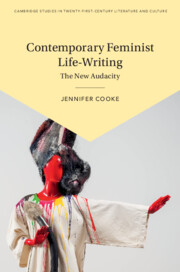Book contents
- Contemporary Feminist Life-Writing
- Cambridge Studies in Twenty-First-Century Literature and Culture
- Contemporary Feminist Life-Writing
- Copyright page
- Dedication
- Contents
- Acknowledgements
- Introduction
- Chapter 1 Autobiography as Feminist Praxis
- Chapter 2 Ugly Audacities in Auto/biography
- Chapter 3 Stripping Off for the First Time
- Chapter 4 Breaking the Binaries
- Chapter 5 The Dangers of Audacity
- Afterword
- Bibliography
- Index
Chapter 3 - Stripping Off for the First Time
Recasting Vulnerability in the Writing of Hetero-sex and Desire
Published online by Cambridge University Press: 31 March 2020
- Contemporary Feminist Life-Writing
- Cambridge Studies in Twenty-First-Century Literature and Culture
- Contemporary Feminist Life-Writing
- Copyright page
- Dedication
- Contents
- Acknowledgements
- Introduction
- Chapter 1 Autobiography as Feminist Praxis
- Chapter 2 Ugly Audacities in Auto/biography
- Chapter 3 Stripping Off for the First Time
- Chapter 4 Breaking the Binaries
- Chapter 5 The Dangers of Audacity
- Afterword
- Bibliography
- Index
Summary
Chapter 3 focuses upon sex and desire. It examines voluntary vulnerability as desired and experienced by heterosexual women, an area which has been largely neglected because of vulnerability’s association with victimhood and sexual exploitation in feminist discourse. The audacity of expressing a desire to sexually submit to a man, not for conservative reasons but for those of sexual adventure, is exacerbated if that woman is a feminist. To publish these desires and experiences as one’s first book is more audacious still. I focus on Katherine Angel’s Unmastered: A Book on Desire, Most Difficult to Tell (2012), Chris Kraus’s I Love Dick (1997), and Marie Calloway’s what purpose did i serve in your life (2013) to explore the significance of women who makes themselves vulnerable to the men they desire.
- Type
- Chapter
- Information
- Contemporary Feminist Life-WritingThe New Audacity, pp. 93 - 133Publisher: Cambridge University PressPrint publication year: 2020

